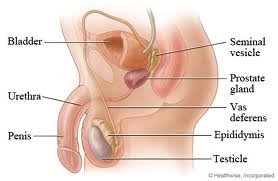assalamuailaikum semua..
sebelum aq taip bende ni..
ku pinta maaf dari mu..
cehh cehh..
tunjuk sopanlah ko myra..
entry ni sebagai pelajaran je tau..
tkde kene mengena dgn apapun..
female reproductive system..
male reproductive system..
bende ni la aq nk tulis..
diam dulu ye..
jgn bising-bising dulu..
kang aq belasah korang kang??
hahahaha..
korang da belajar bende ni..
maybe you study at form 3..
btul tk??
sebenarnya da lama aq blajor bende ni..
well buzy u know..
tak sempat taip benda yg aq belajar kat sekola..
ni nk cerita la ni..
ni nama ye reproductive system..
bende alah ni mesti semua org suka kan??
termasuk kwn-kwn aq..
hahahahaha..
jom aq terang satu-satu bab ni..
Reproductive System
system of organs within an organism which work together for the purpose of reproduction. Many non-living substances such as fluids, hormones, and pheromones are also important accessories to the reproductive system.] Unlike most organ systems, the sexes of differentiated species often have significant differences. These differences allow for a combination of genetic material between two individuals, which allows for the possibility of greater genetic fitness of the offspring.
The major organs of the human reproductive system include the external genitalia (penis and vulva) as well as a number of internal organs including the gamete producing gonads (testicles and ovaries). Diseases of the human reproductive system are very common and widespread, particularly communicable sexually transmitted diseases.
Most other vertebrate animals have generally similar reproductive systems consisting of gonads, ducts, and openings. However, there is a great diversity of physical adaptations as well as reproductive strategies in every group of vertebrates
Male Reproductive System
The human male reproductive system is a series of organs located outside of the body and around the pelvic region of a male that contribute towards the reproductive process. The primary direct function of the male reproductive system is to provide the male gamete or spermatozoa for fertilization of the ovum.
The major reproductive organs of the male can be grouped into three categories. The first category is sperm production and storage. Production takes place in the testes which are housed in the temperature regulating scrotum, immature sperm then travel to the epididymis for development and storage. The second category are the ejaculatory fluid producing glands which include the seminal vesicles, prostate, and the vas deferens. The final category are those used for copulation, and deposition of the spermatozoa (sperm) within the male, these include the penis, urethra, vas deferens, and Cowper's gland
Major secondary sexual characteristics includes: larger, more muscular stature, deepened voice, facial and body hair, broad shoulders, and development of an adam's apple. An important sexual hormone of males is androgen, and particularly testosterone
Male Reproductive System
1. Pubic bone, 2.Clitoral hood, 3. Clitoris, 4. Labia majora, 5. Labia minora (enclosing the Vaginal Opening), 6. Perineum.]] The human female reproductive system is a series of organs primarily located inside of the body and around the pelvic region of a female that contribute towards the reproductive process. The human female reproductive system contains three main parts: the vagina, which acts as the receptacle for the male's sperm, the uterus, which holds the developing fetus, and the ovaries, which produce the female's ova. The breasts are also a reproductive organ during the parenting stage of reproduction.
The vagina meets the outside at the vulva, which also includes the labia, clitoris and urethra; during intercourse this area is lubricated by mucus secreted by the Bartholin's glands. The vagina is attached to the uterus through the cervix, while the uterus is attached to the ovaries via the fallopian tubes. At certain intervals, typically approximately every 28 days, the ovaries release an ovum, which passes through the fallopian tube into the uterus. The lining of the uterus, called the endometrium, and unfertilized ova are shed each cycle through a process known as menstruation.
Major secondary sexual characteristics include: a smaller stature, a high percentage of body fat, wider hips, development of mammary glands, and enlargement of breasts. Important sexual hormones of females include estrogen and progesterone
sumber : wikipedia.org
byk da aq terang bab ni..
sorryla dlm bahasa inggeris..
kalau ada yg tak phm translate kpd bm ye..
bye










No comments:
Post a Comment